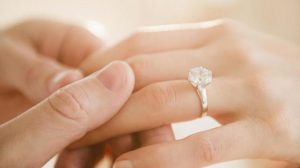PAKISTANI WEDDINGS CUSTOMS AND TRADITIONS
TRADITIONAL WEDDING PLANNER IN LAHORE
Weddings are a practice or ceremony that unites two individuals. A marriage is an approach or a way in which different cultures, societies, ethnic groups and religions aspire to unite two individuals. A marriage usually has a proxy who certifies the marriage contract and usually the bride and groom exchange representative items, such as rings or jewelry, as gifts. The bride and groom wear exceptional clothes for their remarkable day.
A wedding usually consists of an evening after the party known as “reception”. Music, dances, religious and cultural activities are also part of a wedding.
These are the general initiatives of a marriage, but a traditional Pakistani wedding has other aspects that, if not followed, lead to a “disappointment” as the society recalls.
FEATURES OF A TRADITIONAL PAKISTANI WEDDING
According to Pakistani marriages that conform to Islamic (Sharia) law, the Pakistani population is predominantly Muslim; the matrimonial convention is not only the unification of two persons but a union between two families. A Pakistani wedding usually has a large number of events that vary across different Muslim communities, but the routine events of the usual Pakistani wedding are as follows:
- Marriage Proposal
- Engagement ceremony
- Dholki
- Henna ceremony
- Barat and Nikkah
- Reception
- Rukhsati
- Valima
BUDGET AND TIME ESTIMATED FOR A TYPICAL PAKISTANI MARRIAGE
As far as a Wedding planner in Lahore is concerned, it is the union of two families, the two families devoting all their efforts, time and money to make the ceremony as sumptuous as possible. The number of events requires an estimated budget and an agreement between the two families. The ceremony is divided into two parts, the proposal and betrothal usually taking place one year before the wedding proper (the events follow), meanwhile, the two families prepare for marriage and know each other better.
THE PROCEDURE OF THE PAKISTANI WEDDING
MARRIAGE PROPOSAL
When the proposal is finalized among the two families, the events of the ceremony officially begin and the date of the official proposal ceremony is finalized. Housing is set up for various parents who are supposed to attend the wedding from abroad or across Pakistan. Some people do not follow all the events but the 3 main events are Baraat and Nikkah, the henna ceremony and Valima. However, the way these events are organized depends on the geographical location of the marriage across Pakistan.
ENGAGEMENT CEREMONY
A formal gathering on a fairly large scale is organized to announce the betrothal between the bride and groom. According to tradition, the bride and groom are supposed to be engaged separately. The mother of the latter gives him the ring one day and the ring of his mother the other day.

However, now that a couple of days later, two engagement parties are too boring for both families, so the exchange of the bride and groom will ring the same day, followed by the exchange of heritages and gifts. family, as well as religious narratives of the Koran the date of the wedding is decided. An official dinner is organized for the guests. A formal gathering on a fairly large scale is organized to announce the betrothal between the bride and the groom. According to tradition, the bride and groom are supposed to be engaged separately. The mother of the latter gives him the ring one day and the ring of his mother the other day. day.
However, now that a couple of days later, two engagement parties are too boring for both families, so the exchange of the bride and groom will ring the same day, followed by the exchange of heritages and gifts. family, as well as religious narratives of the Koran the date of the wedding is decided. An official dinner is organized for the guests.
DHOLKI
 It is basically an event in which the family of the spouses organizes a party separately in their respectable home. The party consists of women preparing dance routines for the following henna function and the instrument play called Dholak, as well as old traditional wedding melodies sung in the family.
It is basically an event in which the family of the spouses organizes a party separately in their respectable home. The party consists of women preparing dance routines for the following henna function and the instrument play called Dholak, as well as old traditional wedding melodies sung in the family.
HENNA FUNCTION
The henna ceremony usually takes place two to three days before the Nikkah. It traditionally consists of two events, each for the bride and groom. The bride does not accompany the groom at his henna ceremony and vice versa.
HENNA CEREMONY OF THE GROOM
Traditionally, the groom’s henna ceremony consists of the bride’s family and the parents bringing oil and sweets, the oil is applied to the groom’s hair and the groom wears a casual Shalwaar/kurta that day.
HENNA CEREMONY OF THE BRIDE
At the bride’s henna ceremony, the groom’s family brings henna and sweets with them. Henna is applied to the hands of the bride by the bride’s parents, the bride wearing bright yellow, orange or green. and usually does not wear makeup or wear jewelry. Henna is also applied to women. Dance routines and skits are performed to make the occasion even more alive.
Today, the henna ceremony is celebrated together and all the traditions are fulfilled by the respective families.
BARAT AND NIKKAH
Barat is mainly the arrival of the groom at the ceremony of Nikkah accompanied by his family and his family in a carriage and a music group that follows. Nikkah is an Islamic act in which the spouses sign a marriage contract followed by the recital of the Koranic Suras and Dua for the future of the married couple. The act of Nikkah is observed by relatives and family in the presence of an official “imam” authorized by the government.
Marriage is considered illegal without Nikkah. Marriage is consensual only when both spouses have two witnesses.
RECEPTION
The Nikkah takes place either a day before the reception or at the same place before the start of the ceremony. The parents arrive at the bride’s residence where the wedding reception is supposed to take place or in a room reserved by the bride’s family. The Barat is greeted with a shower of roses by various members of the bride’s family. The sisters and cousins of the bride ask for money to allow the groom to enter the room.
The groom is dressed in traditional costume, “Sherwani”, with a headdress known as “Sehra” or “City”. However, the bride wears a traditional red, purple or pink dress called “lengha” which includes heavy embroidery, she also wears bridal shoes and thick gold jewelry or traditional gold-plated jewelry as well as hairstyles and make-up. married. The delicious dinner is organized by the bride’s family, followed by various desi desserts.
RUKHSATI
 Rukhsati is a tradition in which the bride and groom followed by the groom’s family leave the reception ceremony in the direction of the groom’s residence.
Rukhsati is a tradition in which the bride and groom followed by the groom’s family leave the reception ceremony in the direction of the groom’s residence.
The Holy Quran is placed at the top of the bride’s head to receive the blessings of the Lord and to protect her. This indicates that the bride is now expected to lead a new life with her husband and her new family, which usually results in tears shed by the bride and her family.
VALIMA
The ceremony of Valima is the last dinner organized by the married couple after the consummation and publicity of their wedding. The fundamental purpose is to celebrate their marriage. The dinner arrangement, the woman’s dress and the gold jewelry are provided by the husband. The Valima ceremony also means the blessing of the groom’s parents on the married couple for a happy marriage life.
The wedding officially ends with a wedding gift presented to the bride and groom generally in the form of money. The couple decides to choose a honeymoon destination to celebrate the first wedding days; the northern regions of Pakistan are generally chosen as honeymoon destinations; However, affluent families prefer a honeymoon abroad.

